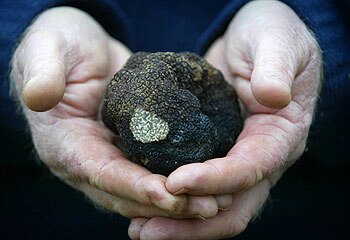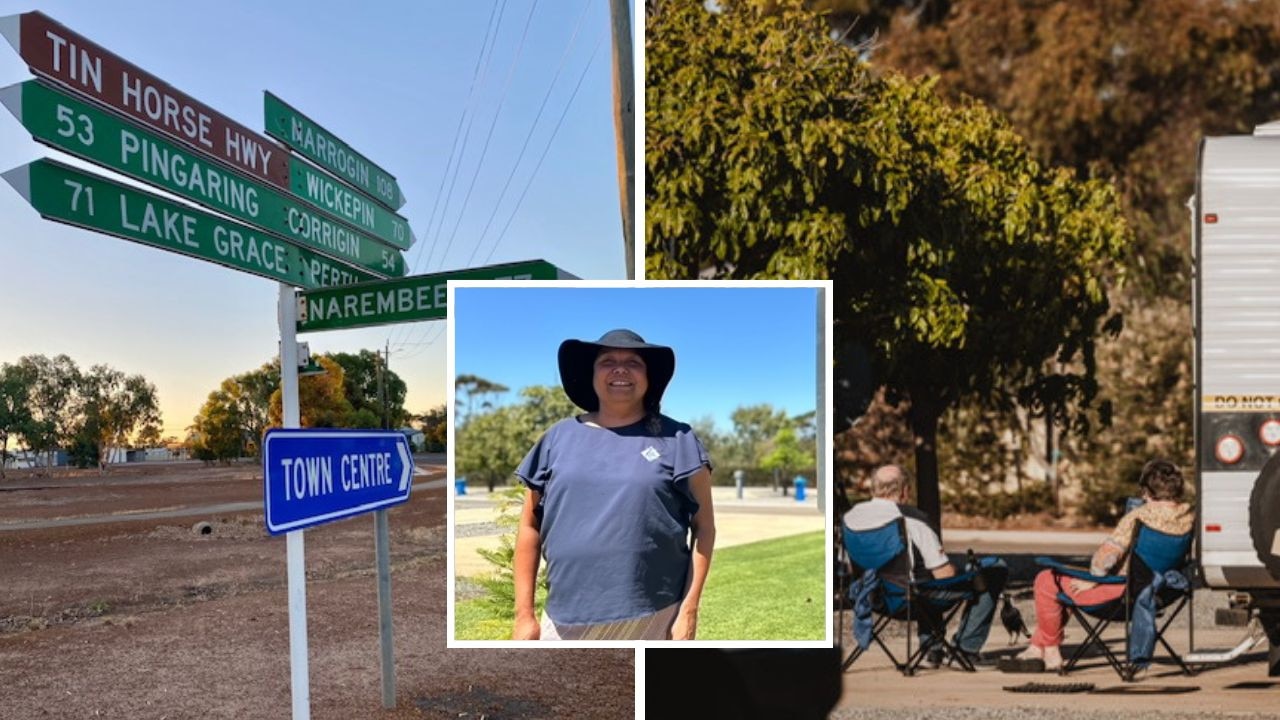WA truffles in black gold rush
THEY'RE mysterious, romantic and a gourmet luxury. The truffle is a menu's trump card and harvesting them can be just as exciting, as Judith Elen found.

WILD winds and torrential rains sweep the country, buffeting the southern states.
I'm at the southerly edge of Western Australia, at the tip of the Darling Range, in Manjimup.
It sounds as though someone above is upending a giant water tank on to the metal roof of the farmhouse, my shelter for the night. Trees litter the landscape and power lines are down.
In Manjimup, an important branch of the country's truffle industry is poised to blossom. There's high excitement in the air, so we might as well have all the trimmings. For the few days I'm here, the rain only lets up for a couple of sun-streaked hours on my last morning. We seize the moment and venture out in sturdy wellies to hunt for black diamonds. I'm at the Wine & Truffle Company, established in 1997, first with vineyards and extending to truffles nearly 10 years ago.
The company's original Hazel Hill trufferie began with 13,000 hazelnut trees, their roots inoculated with truffle spore. Last year they found 125kg of truffles; this year 168kg have already been harvested and the educated guess is for a total of about 400kg. Four or five times as many trees are producing truffles. And there are new plantings of 28,000 oaks at nearby Oak Valley.
Black Perigord truffles (tuber melanosporum) are the world's best, with the possible exception of the rare white truffles found only in areas of Italy and Croatia. These are France's black princess, or black diamond, desired by the world and in diminishing supply.
We're out this morning, in this snatch of sunshine, pacing between rows of hazelnut trees, moss and leaf mould underfoot. Errol and Skye, a black and a white labrador, run from tree to tree, snuffling the roots. Rain spangles the sparse autumnal leaves, and the mottled trunks and branches are sharply defined against a wide, changeable sky.
The dogs are delighted to be out after the violent weather. When they pick up a scent of truffle, they give the earth a single scratch and the men take over, gently scraping the soil away and sniffing the ground. Normally they mark the spot and come back later or the dogs get bored, but this morning we have a close look to see what's there.
There are lots of finds. The dogs can sniff out the fungus buried deep below. Dog handler Damon Boorman scoops some surface soil where a buried truffle has been detected, holds it out for me to sniff and, there it is, that rich smell, faint but unmistakable though the fungus might be several centimetres down.
Suddenly there's a flurry of excitement. Brushing away the earth like archeologists, Boorman and scientist Nick Malajczuk have unearthed a black nugget that fills the latter's palm. It looks to weigh 500-600g, perhaps worth $2000 retail. The aroma is amazing. We photograph and sniff it, and everyone tells a story.
"It was July 28, 2003, at 3.30pm," Malajczuk announces, gazing into the distance, "when we found our first truffle." I can imagine the excitement. It was Guinness – his black labrador-golden retriever cross, now 15 and a bit of a legend – that found it. That truffle was also the first on the mainland. It weighed 168g. The first found in Australia was in Tasmania in 1999.
Malajczuk is the researcher at the Wine & Truffle Co. He's a former CSIRO forestry scientist with a doctorate in the field, but is treading unknown territory as he investigates different ways of doing things in southern hemisphere truffle production.
In France, truffles have appeared naturally on the roots of forest trees for centuries, probably millennia. Now, as output plummets in France, government researchers there are telling truffle farmers about new, scientific measures, but they don't listen. Or they listen, then go home and do it the old way, French chef Alain Fabregues of the Loose Box restaurant at Mundaring, a few hours' drive from here, tells me later.
In WA, Malajczuk is getting strong results from his tree-face research, looking at why one tree produces a truffle and the next one doesn't, at sizes, fertilisation (everything here is organic), and much more. He knows more than enough to ask the right questions. (The company has a three-year government grant of $250,000 annually, and collaborative research projects are under way with WA's three universities.)
One of the world's supreme natural luxuries, truffles have been the exclusive domain of the northern hemisphere, notably France and Italy. But the industry is rapidly establishing itself in Australia, and with yields down in France, this is a significant development.
Truffles are a unique fusion of romance and deep earthiness. Dangerous, even diabolical, in European mythology – akin to the green fairy, absinthe – the princesse noire was thought in the middle ages to be the visible sign of devilry, born of the earth yet potent and mysterious.
These nuggets of black fungi that grow on the roots of oak or hazelnut trees connect heaven and earth. It's difficult with truffles to stay earthbound.
To inhale their pungent aroma is to be plunged into the realm of the forest floor, dark earth, buried roots, decaying leaves; to taste them is to be transported. And to eat truffles at the Loose Box is to go straight to the source.
Fabregues also has truffle trees: oaks rather than hazelnuts, because of the soil. "If it doesn't work, at least I'll have a beautiful oak forest," he says. But if progress continues, he believes Australia could be the world's prime producer.
Fabregues's contact in France, Jacques Pebeyre of Maison Pebeyre in Cahors, established in the 19th century and described in a French truffle article as "a house of serious professionals who guarantee the quality of their products", is the European agent for the Wine & Truffle Co. This is the big league. And truffles have been sent to French chefs Joel Robuchon and Alain Ducasse: Fabregues says they were impressed.
Truffles are such a luxury that even in France perhaps 80 per cent of chefs may not have handled them, Fabregues tells me. Chefs have to learn how to nurture their flavour and aroma. Truffles are at their very best warmed, not fiercely cooked, and blossom with creamy eggs, pasta, souffles and sweet seafood such as scallops and marron.
Myths aside, truffles continue to be mysterious. From a practical point of view, there is much that is unknown about their growth. Tasmania was the first state to go down the truffle trail, but yields have not been great. Tasmania lacks the Mediterranean climate truffles need: cold in winter and hot in summer.
Here at Manjimup, the climate is close to that of Perigord and other French truffle-growing areas, and Malajczuk manipulates the soil to equate with French soils. To get harvests in perspective, 19th-century France produced more than 1000 tonnes annually; 35 tonnes is now considered a good year. Last year it was 15 tonnes and predictions are for 22-23 tonnes this year. France and Italy combined are producing 50-80 tonnes a year and this past winter Spain produced 30 tonnes.
There are hundreds of small producers in Provence alone. With 30 or so trufferies approaching the Wine & Truffle Co's output, Australia would be in the same ball park as the French (their black market figures aside, of course).
There are various small producers across Australia, sometimes known only to their immediate restaurant customers, often by word of mouth. Five Acre Nursery, also in Manjimup, supplies Simon Johnson in the eastern states.
Rumours and obscure trails sometimes echo, ever so faintly, the labyrinthine truffle world of the south of France. The big difference is that here production is growing.
– Judith Elen was a guest of Tourism Western Australia and the Mundaring Truffle Festival.



